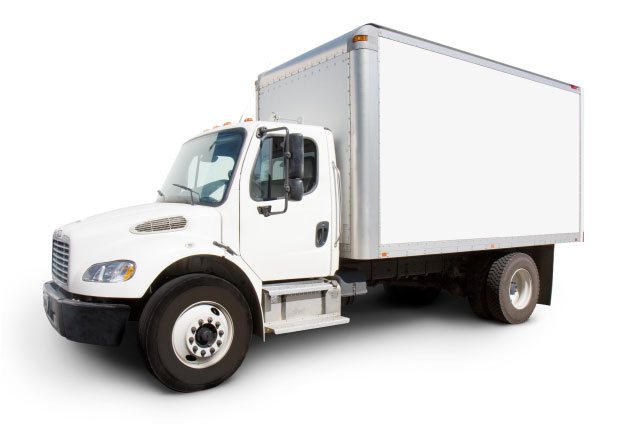Solo Strategies for Managing Heavy Lifting
Posted on 17/06/2025
Solo Strategies for Managing Heavy Lifting
Managing heavy lifting alone is a formidable challenge--whether you're moving house, handling workplace materials, or working on home improvement projects. Safety concerns and the risk of personal injury make it vital to approach solo lifting tasks with a strategic and informed mindset. This comprehensive guide explores expert techniques, practical guidelines, and essential equipment, empowering you to confidently tackle any heavy-lifting project by yourself.
Understanding the Fundamentals of Solo Heavy Lifting
Before you attempt to lift a bulky or heavy object without assistance, it's crucial to understand the basic principles that ensure your safety and efficiency. Lifting heavy objects by yourself can subject your body to unnatural stresses. Preparation and proper technique are key to minimizing the risk of injuries such as muscle strains, ligament tears, or back problems.
- Assess the Load: Examine the item's size, weight, and shape.
- Plan Your Route: Clear obstacles and ensure a clean, stable path.
- Know Your Limits: Don't attempt to lift more than you can handle comfortably.
- Use Lifting Aids: Identify tools or accessories that could make the job easier.

Planning: The First Step for Solo Heavy Lifting Success
Effective planning is the cornerstone of any successful solo heavy lifting endeavor. Detailed preparation minimizes risks and helps you work efficiently. Here's how to ensure optimal results:
- Evaluate the Task: Consider what you need to move, the distance, and the destination. Can it be broken down? Can you remove parts or empty the contents to make the object lighter?
- Gather Equipment: Assemble lifting gear before you start. Having the right tools on hand prevents last-minute scrambling and reduces the chances of injury.
- Prepare the Space: Create a clear lifting area, ensuring there are no tripping hazards, unstable ground, or obstacles.
Essential Gear for Solo Heavy Lifting
Investing in the right equipment can transform your solo lifting experience. Here's a selection of indispensable tools designed for solo lifters:
- Lifting Straps & Slings: Distribute the weight more evenly and relieve pressure on your back.
- Furniture Dollies & Hand Trucks: Move heavy loads with wheels instead of relying solely on strength.
- Forearm Forklifts: Reduce strain by using leverage and your stronger muscle groups.
- Gloves with Grip: Improve control while also protecting your hands.
- Back Support Belts: Encourage proper posture and lower the risk of back injuries.
Always test equipment before using it on a heavy item. Even the best gear needs to be in good working condition for reliable, safe solo lifting.
Technique: Safe Lifting Tactics for Working Alone
Lifting technique makes all the difference between a smooth lift and a painful injury. Here's how you can use proper solo lifting methods:
Steps for Safe, Solo Heavy Lifting
- Start with a Wide Base: Stand with your feet shoulder-width apart for maximum balance.
- Bend Your Knees, Not Your Back: Lower your body by bending your knees and hips, keeping your back upright.
- Keep the Load Close: Hold the item as close to your body as possible to reduce strain on your spine.
- Lift Smoothly: Use the power of your legs, not your back, to lift up in a controlled, steady movement.
- Avoid Twisting: If you must turn, move your feet rather than twisting at the waist.
- Put Down Carefully: Lower the load the same way--by bending your legs, not your back.
Remember: Rushing increases risk. Take your time and ensure each step is done properly.
Smart Strategies for Common Solo Lifting Scenarios
Depending on the type of object and the contextual challenges, your approach to lifting heavy things on your own may require some adjustment. Here are a few common scenarios and solutions:
Moving Large Appliances or Furniture
- Disassemble When Possible: Remove drawers, doors, and other detachable components.
- Utilize Sliders: Place furniture sliders or pieces of thick cloth under the edges to ease movement across floors.
- Employ Ramps or Step Platforms: When moving items up or down stairs, use ramps or sturdy platforms for better control.
Construction Materials and Equipment
- Break Down Loads: Carry smaller sections at a time if possible (bricks, bags, tiles).
- Leverage Tools: Use wheelbarrows, carts, and dolly systems whenever possible.
- Stack Smartly: If you must move multiple items, stack them safely for balance and stability.
Garden and Outdoor Projects
- Moisten Soil: Wetting the soil minimizes dust and lightens the load when digging.
- Proper Footwear: Wear boots or shoes with ankle support and tread for extra safety.
- Move in Short Stages: Rest regularly and avoid fatigue when transporting heavy stones or soil.
Injury Prevention: Staying Safe While Lifting Solo
The number one concern when attempting heavy lifting alone is risk of injury. Prioritize safety above all and make these preventive techniques part of your routine:
- Warm Up First: Simple stretches and light activity prepare muscles for physical work.
- Stay Hydrated: Muscles respond better when you're properly hydrated.
- Wear Proper Clothing: Opt for snug, comfortable clothing that won't catch on objects or impede movement.
- Rest as Needed: If you feel pain or fatigue, don't push through. Take breaks as needed.
- Know When to Stop: If the load is too heavy or you are unsure, don't risk it. Seek mechanical assistance instead.
Innovative Hacks for Managing Heavy Loads by Yourself
Sometimes thinking outside the box is the best strategy for independent heavy lifting. Try these inventive solutions:
- Leverage Levers: Use crowbars or pry bars for shifting especially massive objects.
- Inclined Planes: Create ramps with boards for easier upward or downward movement.
- Rolling Logs: Place round sticks or pipes beneath large objects and roll them forward, ancient Egyptian style.
- Sliding Mats: Use cardboard, towels, or plastic mats to reduce friction.
- Block and Tackle: Employ pulleys for vertical lifting where feasible.
Maintaining Your Body for Solo Heavy Lifting Success
It's not just about how you lift--it's also about how prepared your body is for the job. Proper fitness and regular maintenance can turn you into a stronger, safer solo lifter.
Recommended Exercises for Lifting Strength
- Squats & Deadlifts: Build foundational lower back and leg strength.
- Planks & Bridges: Strengthen core muscles, vital for stabilization when lifting.
- Flexibility Training: Yoga and dynamic stretches keep your body limber and less prone to injury.
- Grip Work: Squeezing stress balls or using grip trainers enhances hand and forearm power.

When to Ask for Help: Knowing Your Limitations
There's no shame in recognizing when a load is too great for one person. If you have doubts--whether about weight, awkwardness, or location-- call in reinforcements, use machinery, or hire professionals. Remember, your health is priceless.
Summary: Empowering Your Solo Heavy Lifting Journey
Solo heavy lifting is by no means easy, but with the right strategies and equipment, it's entirely possible to handle even daunting tasks alone. Prioritize safety, use smart planning and aids, master proven techniques, and maintain your physical condition. These solo strategies for managing heavy lifting will help you save time, reduce risk, and achieve more--without relying on others.
Make every lift a safe one!





